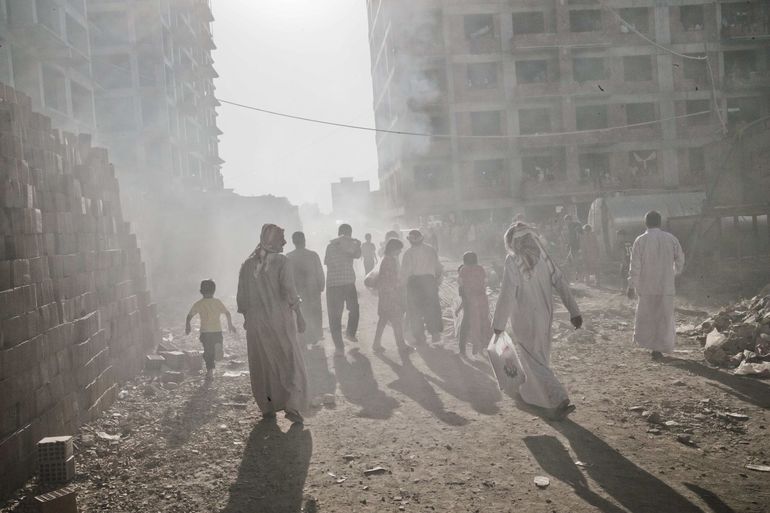Deciding About The ISIS Genocide
Yazidi refugees walk in the city of Zakho, Dohuk province, Iraqi Kurdistan, Aug. 16, 2014.
Genocide is defined as the deliberate killing of a large group of people, especially those of a particular ethnic group or nationality. In 1948, following the conclusion of WWII, the United Nations passed a resolution declaring genocide to be a crime against international law and requiring that countries cooperate to “liberate mankind from this odious scourge”. Since the majority of the world passed this agreement to take a stand against future genocide, if the UN determines a nation or group’s actions to be similar to genocide, this majority will be compelled to resolve the issue. With all this in mind, the UN has begun to consider the Islamic State’s slaughter of Yazidi people as an actual genocide.
Last year, as ISIS traversed Iraq, the group engaged in the capture and slaughter of thousands of Yazidi men. Passing through Iraqi cities and towns, the group rounded up as many Yazidi men over the age of 14 as they could find and led them to nearby ditches where they were executed. According to testimonies by a scarce few survivors, the only way to live through the execution was to use the body of an already dead man as a shield from the surrounding violence and chaos.
However, the abuse was not limited to the males of each town. Many women reported rape, abduction, and sexual slavery, ranging from young girls to elderly women. One case involved the rape of two young girls, ages 6 and 9, and another, the repeated rape of a 19-year-old Iraqi woman. And yet, this violence is not shocking to many; it has been featured on the news in numerous reports in the past year. What is shocking is the notion that this violence and chaos was not systematic. Reports have shown that ISIS members were given detailed instructions on how to interact with their captives, including strict commands to murder and/or rape in a systematic fashion.
In many ways, these actions mimic the actions taken during the Rwandan, Armenian, and Nazi genocides: methodic killings, women raped and sold as property, and children abducted and recruited into the militia. Thousands of premeditated killings, clearly evidenced by phone calls between ISIS members and leaders, are undeniably indicative of genocide. The UN has the ability to classify ISIS’ actions as genocide before the numbers become as staggering as in Rwanda, Germany, and Armenia, thereby potentially saving thousands.
The classification of ISIS’ actions as genocide would pressure many nations currently withdrawn from the conflict to involve themselves. Action on the part of the United Nations would prevent the terror organization’s continued path of destruction. Aside from recent declarations of war following attacks in Paris, Beirut, and Baghdad, few countries have joined forces to create a large enough response to ISIS’ actions. With a compulsion to spark efforts behind a new campaign, the world may actually have an opportunity to combat ISIS effectively, taking a step toward toppling the fiercest terror organization the world has seen.







